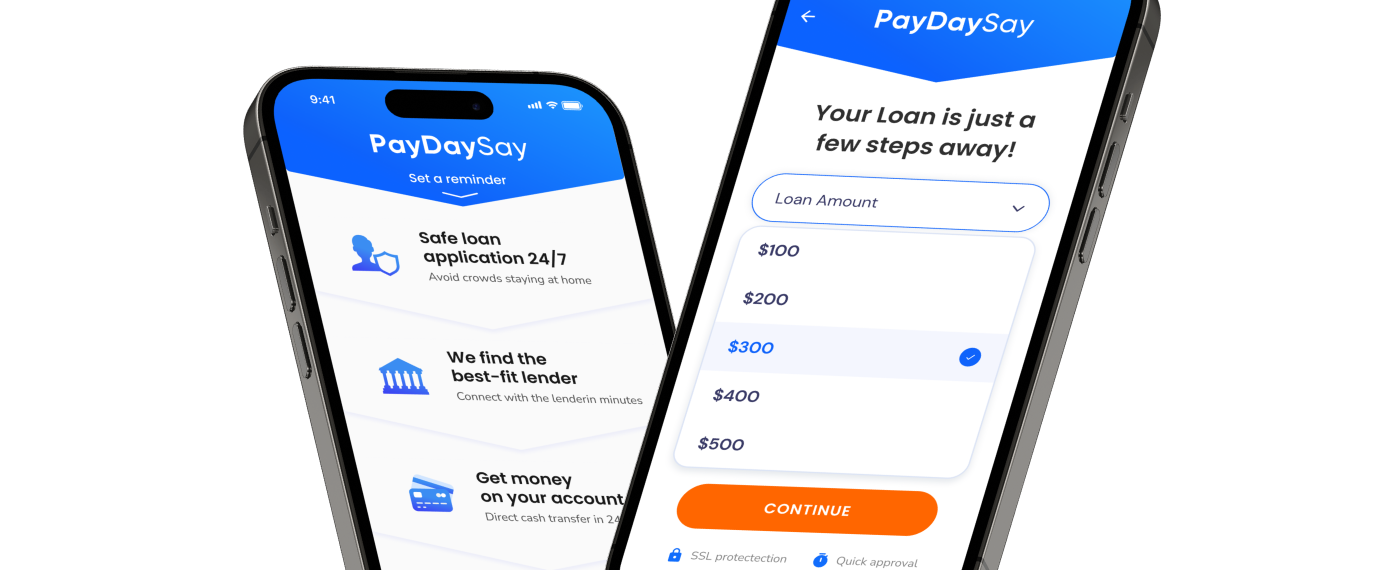Nowadays, business loans are a popular form of bank lending. They involve loans to entrepreneurs to start, expand, and maintain businesses. They are widespread because they are taken not for consumption but to invest in the business and produce new money.
Many face the problem of arranging credit and whether it is needed in their particular situation. That’s why we decided to give you a step-by-step guide on how to apply for a business loan. So, keep reading to learn a lot of useful information!
1. Consider Whether You Need Financing
Money is the lifeblood of businesses. The more there is, the faster they can grow and develop. But before taking a loan, the owner must answer two questions:
Does it make sense?
It is worth borrowing when it gives the company an advantage that can be turned into extra profit. A company can take a loan to buy, for example, a new conveyor and double its production capacity. But if the demand for its products increases only by 10%, such credit will be unlikely to pay for itself.
However, if you invest in equipment that can make production cheaper and reduce the cost of goods, such a loan is likely to be justified.
Can the company afford it?
The payments on the loan should not exceed the company’s operating profit. If the company needs funds quickly, using an app that lend money instantly can provide a short-term solution, but it’s essential to consider the terms and interest rates.
2. Decide What Type of Business Credit You Need
There are different types of business loans. Businesses can choose the best one for themselves. Below you can find some information about the 5 most popular ones:
| Name | Features |
| Term loans | It is a large sum of money borrowed from a lender and paid back over a certain time at regular intervals with a percentage. Depending on your lender, you may have to repay the loan on a weekly, bi-weekly, or monthly basis. Repayment intervals might range from a few months to at least ten years. |
| SBA loans | This is a financial instrument developed by the Small Business Administration (SBA) to help only small businesses get a loan. They do this by guaranteeing a portion of the amount to be borrowed, limiting interest rate and any other fees that may arise. Startups can also ask for SBA financing. According to the Congressional Research Service, the SBA microloan program is intended for early-stage firms and startups. |
| Business lines of credit | A comfortable way to finance an enterprise within a certain amount is when a loan for small business or larger enterprises is issued and paid in parts (tranches). The credit line can be periodically renewed and used within the established limit. There is also a non-revolving credit line.
Credit line allows you to insure against cash shortages when there are delays in payments to counterparties. It also serves when you need funds for large unplanned purchases of goods, equipment, and inventory. |
| Equipment loans | This is a special-purpose loan. You can take it at the credit institution where you have the current account or choose another lender. It can be used by small and medium-sized businesses. You may use a business equipment loan to modernize production or open a new business line. But it is not advisable to withdraw your funds from the turnover. |
| Invoice factoring | It is the sale of unpaid invoices for a certain amount. The factoring company will purchase overdue invoices from you for 80-90% of the amounts specified in them. It will also take over the receipt of payment from debtors. Factoring helps companies in various industries. These are transportation, manufacturing, construction, service providers, wholesalers, and many others. They can be both distressed and fast-growing. In addition, factoring is more profitable than a bank loan because collateral is not required, and it is an off-balance sheet. |
3. Determine If You Qualify for a Business Loan
Business loans are often the most important factor in building a successful business from scratch and expanding an existing one. However, many factors influence the size of business loans for small and medium-sized businesses. Loans to entrepreneurs are based on a company’s profitability and annual income.
The number of funds provided will also depend on the date of registration. The higher these figures are, the more likely the money will be granted. You must also have a profitable business, transparent reporting, and a positive business reputation. It is not desirable to have debts to the state budget (for taxes and other obligatory payments), bad debts, and seized property.
Moreover, it is important to consider the credit score. Businesses should have a minimum score of 75 from 100. Think about what the collateral for the loan will be. If the value of the collateral is not enough to cover the loan, you may get a denial.
4. Decide What Payments You Can Afford
The first thing to do when paying off credit is to draw up a repayment schedule and try to follow it as much as possible. Do a detailed analysis of your income and expenses to find where you can cut back on spending so that the money can be spent more profitably, namely on paying off the loan.
Try to avoid defaulting on loan payments. This spoils your credit history and can negatively affect your ability to refinance and take out business loans in the future.
You can use the 50/30/20 rule, which means that up to 50% of your monthly net income you spend on necessities, including your utility bills, mortgage payment, and transportation. Different “wants” should receive the next 30% of your budget, while the final 20% should go toward your debt repayment.

5. Choose How You Want to Secure the Loan
One of the most important conditions that largely determine the credit parameters is the collateral the borrower provided. According to this feature, loans are divided into:
- Secured. The provision of collateral on the loans provides more favorable loan terms, as it significantly reduces the risks of the bank. There are different types of collateral, which include:
- Pledge. In this capacity, any liquid and valuable property of the client can be registered, such as a car or real estate;
- Surety. A form of relationship in which individuals or legal entities vouch for the borrower, sharing with him the responsibility for the loan.
- Unsecured. A loan is given without any of the collateral options described above. In this case, the bank compensates for the high risk of such a loan with a high interest rate but limits the amount and duration of the loan.
6. Compare Business Lending Options
When starting a business, credit is often the only way to make up for lack of startup capital, which is critical in the early stages. To have the necessary margin of safety to focus on building a successful business, entrepreneurs apply for loan support.
Although it puts extra pressure in the form of a percentage, it allows them to concentrate on executing their business plan. There are several places to get a small business loan, but today we decided to tell you about the 3 most popular types of lenders. Each has its own pros and cons, and the choice depends on your circumstances and preferences.
Online Lenders
Online lenders suggest any kind of credit not directly from a traditional bank. They provide competitive interest rates and lower fees, like PayDaySay, because they have fewer overhead costs. Customers also get a simple loan application and servicing process compared to the traditional approach.
The disadvantages include the lack of branches, so online lenders won’t be the best choice for borrowers who prefer in-person service. They sometimes focus on just one or two areas and don’t offer the same range of financial services as traditional banks.
Traditional Banks
Traditional banks are the most common type of debt financing used by small and mid-sized businesses. They usually have low interest rates and the most favorable conditions. Traditional banks serve as the standard by which all other lending opportunities are judged.
Yet, they have their advantages and disadvantages. Getting a bank loan has one significant drawback. A bank can be unwilling to provide you with any funding even if you have a solid financial plan that expects growth.
You may get a rejection because you measure progress in a way that the bank is not accustomed to assessing, or your business is in a new industry. But this type of lender often has a good reputation, so you can safely trust them.
Microlenders
Microcreditors grant business loans similar to traditional bank loans. They represent the lending of money under terms of repayment, fees, and urgency. Then, the client undertakes to return the funds within the period specified in the contract by paying a predetermined amount of remuneration.
Microcreditors have several advantages, such as low lending rate and little or no collateral. You need to spend a minimum of time and effort to apply. Also, the lender doesn’t inform a third party that you are using microloans. Besides, the small size of the microloan itself and its short repayment term are two main drawbacks that should be considered.
7. Make a Request For a Business Loan
Before getting credit, you have to register your business and list it with the tax authority. We recommend choosing a lender in advance for further service.
If it is a bank, you should open an operating account, as this will increase your chances and expand your lending opportunities. Pay attention to the amount of overpayment, the terms of scheduled and early repayment, and the order of accrual of penalties in case of failure to meet payment deadlines.
It is better to submit an application in different places at once. You can do it online to save time. If they are pre-approved, specialists will contact you and invite you for an interview.
Then you should submit the necessary documents and wait for the final decision of the lender. The more documents you provide when you send an application, the more likely the loan will be accepted. So, prepare a letter of cooperation or franchise agreement, contracts with suppliers and landlords, etc.
How To Pay Business Loan Correctly?
It is very easy to get a loan, but it is much more difficult to pay off creditors. As practice shows, getting out of the deepest financial hole is possible if you do not despair. Paying at least a little more than the minimum payment will be more profitable because it will reduce the timing of payments. As a rule, about 10% of your income is wasted on random things, so try to put them into a credit account immediately.
There are things you spend more on than you need to, thinking that this minimum amount doesn’t affect anything. This may sound naive, but write down all of your expenses, and you’ll see what you can save on. Basically, expect that 20% of your income should go toward the credit payments.
Overall
Any business that sets ambitious goals and plans to expand and grow needs financing. Entering new markets, increasing the range of products, modernizing production facilities – all this requires a good amount of money.
Large corporations can afford to develop by reinvesting profits. Smaller companies and individual entrepreneurs are extremely limited in resources. Therefore, loans remain one of the key and non-alternative sources of borrowed funds for small and medium-sized businesses. Using our tips, you can easily find a suitable lender, submit your application, and get credit in a short time. Follow them, and you will succeed!













 on your homescreen
on your homescreen